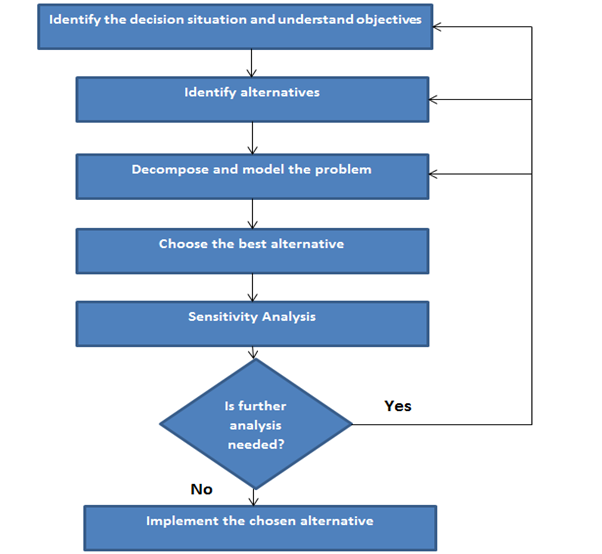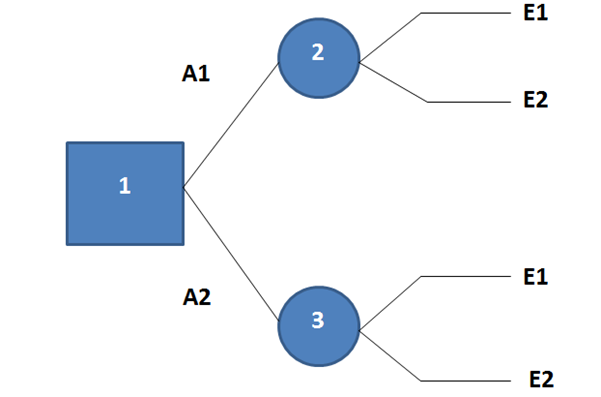Decision Theory
Decision theory is principle associated with decisions. Contemporary decision theory was developed in the mid of the 20th century with the support of several academic disciplines. Decision theory is typically followed by researchers who pinpoint themselves as economists, statisticians, psychologists, political and social scientists or philosophers. Decision theory provides a formal structure to make rational choices in the situation of uncertainty. Given a set of alternatives, a set of consequences, and a correspondence between those sets, decision theory offers conceptually simple procedures for choice. The origin of decision theory is derived from economics by using the utility function of payoffs. It proposes that decisions be made by computing the utility and probability, the ranges of options, and also lays down strategies for good decision.

Decision theory is a set of concepts, principles, tools and techniques that help the decision maker in dealing with complex decision problems under uncertainty. More specifically, decision theory deals with methods for determining the optimal course of action when a number of alternatives are available and their consequences cannot be forecasted with certainty.
According to David Lewis (1974), "decision theory (at least if we omit the frills) is not an esoteric science, however unfamiliar it may seem to an outsider. Rather it is a systematic exposition of the consequences of certain well-chosen platitudes about belief, desire, preference and choice. It is the very core of our common-sense theory of persons, dissected out and elegantly systematized".
In theoretical literature, it is represented that decision theory signifies a generalized approach to decision making. It enables the decision maker to analyze a set of complex situations with many alternatives and many different possible consequences and to identify a course of action consistent with the basic economic and psychological desires of the decision maker.
Decision theory problems are categorized by the following:
- A decision criterion
- A list of alternatives
- A list of possible future events (states of nature)
- Payoffs associated with each combination of alternatives and events
- The degree of certainty of possible future events
There are two categories of decisions theories that include normative or prescriptive decision theory to identify the best decision to take, assuming an ideal decision maker who is fully informed, able to compute with perfect accuracy, and fully rational. The practical application of this prescriptive approach is called decision analysis, and aimed at finding tools, methodologies and software to help people make better decisions. The most systematic and comprehensive software tools developed in this way are called decision support systems.
In contrast, positive or descriptive decision theory explain observed behaviors under the assumption that the decision-making agents are behaving under some consistent rules. These rules may, for instance, have a technical framework or an axiomatic framework, integration the Von Neumann-Morgenstern axioms with behavioral desecrations of the expected utility hypothesis, or they may explicitly give a functional form for time-inconsistent utility functions.
Solution to any decision problem include following steps:
- Identify the problem
- Specify objectives and the decision criteria for choosing a solution
- Develop alternatives
- Analyze and compare alternatives
- Select the best alternative
- Implement the chosen alternative
- Verify that desired results are achieved
Decisions in stages, decision trees:
In many instances, the choice of the best act is not made in one stage, and the decision problem involves a sequence of acts, events, acts, events. There may be a number of basic alternatives, each leading to one of a number of situations depending on the outcome of a certain random process. At each such situation, a number of other alternatives may be available which also lead to a new set of situations depending on another set of events and so on, with acts followed by events, followed by acts, events. Discrete decision theory problems can be represented pictorially using decision tress. It chronically portrays the sequence of actions and events as they unfolds. In below figure, square symbol precedes the set of actions that can be taken by decision maker. The round node precedes the set of events or states of nature that could be encountered after decisions is made. The nodes are connected by branches.
Analysis of Decision Trees: After the tree has been drawn, it is scrutinized from right to left. The aim of analysis is to determine the best strategy of the decision maker that means an optimal sequence of the decisions. To analyze a decision tree, managers must know a decision criterion, probabilities that are assigned to each event, and revenues and costs for the decision alternatives and the chance events that occur.
There are two possibilities to how to include revenues and costs in a decision tree. One possibility is to assign them only to terminating nodes where they are included in the conditional value of the decision criterion associated with the decisions and events along the path from the first part of the tree to the end. However, it can be appropriate to assign revenues and costs to branches. This reduces the required arithmetic for calculating the values of the decision criterion for terminating nodes and focuses attention on the parameters for sensitivity analysis.
When analyzing a decision tree, managers must start at the end of the tree and work backwards. They perform two kinds of calculations.
For chance event nodes managers calculate certainty equivalents related to the events emanating from these nodes. Under the assumption that the decision maker has a neutral attitude toward risk, certainty equivalent of uncertain outcomes can be replaced by their expected value. At decision nodes, the alternative with the best expected value of the decision criterion is selected.
Benefits of Decision Trees
They enable to obtain a visual portrayal of sequential decisions, i.e. they picture a series of chronological decisions. Decision tree are universal, they make more accurate the structure of the decision process and facilitate a communication among solvers of the decision problem. Decision tree force the decision maker to appreciate all consequences of his decisions. Construction and analysis of decision trees by means of computers makes possible to experiment with decision trees and quickly to establish the impact of changes in the input parameters of the tree on the choice of the best policy.Limitations of decision trees:
- Only one decision criterion can be considered.
- The decision tree is an abstraction and simplification of the real problem. Only the important decisions and events are included.
- Managers cannot use decision trees if the chance event outcomes are continuous. Instead, they must redefine the outcomes so that there is a finite set of possibilities.
The significant result of the analysis of a decision tree is to choose the best alternative in the first stage of the decision process. After this stage, some changes in the decision situations can come, an additional information can be obtained, and usually, it is essential to actualize the decision tree and to determine a new optimal strategy. This procedure is required before every further stage.
Theoretical studies have revealed that decision theory is a formal study of rational decision making formed largely by the joint efforts of mathematicians, philosophers, social scientists, economists, statisticians and management scientists (Jeffrey 1992). While decision theory has history of applications to real world problems in many disciplines, including economics, risk analysis, business management, and theoretical behavioral ecology, it has more recently gained acknowledgment as a beneficial approach to conservation in the last 20 years (Maguire 1986).
To summarize, Decision theory is a Structure of logical and mathematical concepts which is intended to assist managers to formulate rules that may lead to a most beneficial course of action under the given circumstances. Decision theory divides decisions into three categories that include Decisions under certainty; where a manager has far too much information to choose the best alternative, Decisions under conflict; where a manager has to anticipate moves and countermoves of one or more competitors and lastly, Decisions under uncertainty; where a manager has to dig-up a lot of data to make sense of what is going on and what it is leading to. It is established that decision theory can be applied to conditions of certainty, risk, or uncertainty. Decision theory identifies that the ranking produced by using a criterion has to be consistent with the decision maker's objectives and preferences.

